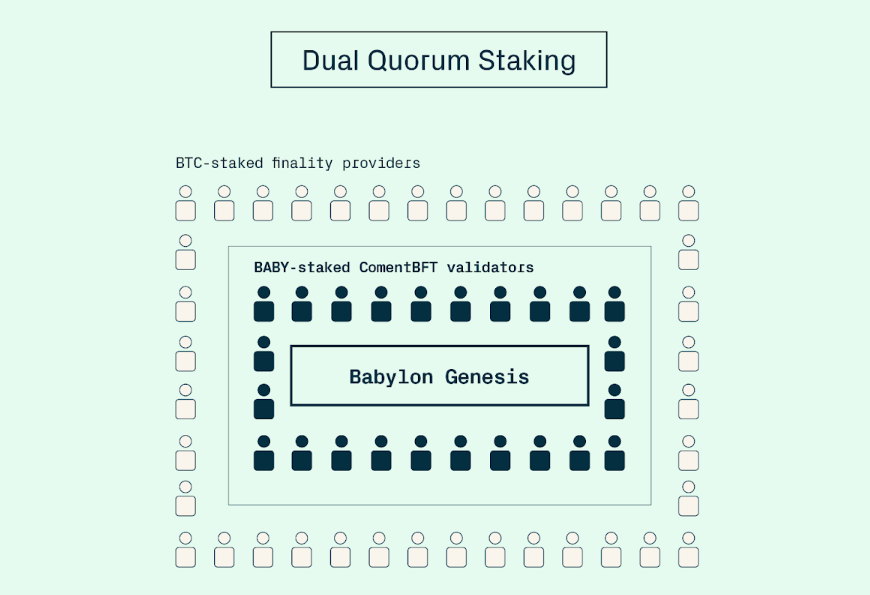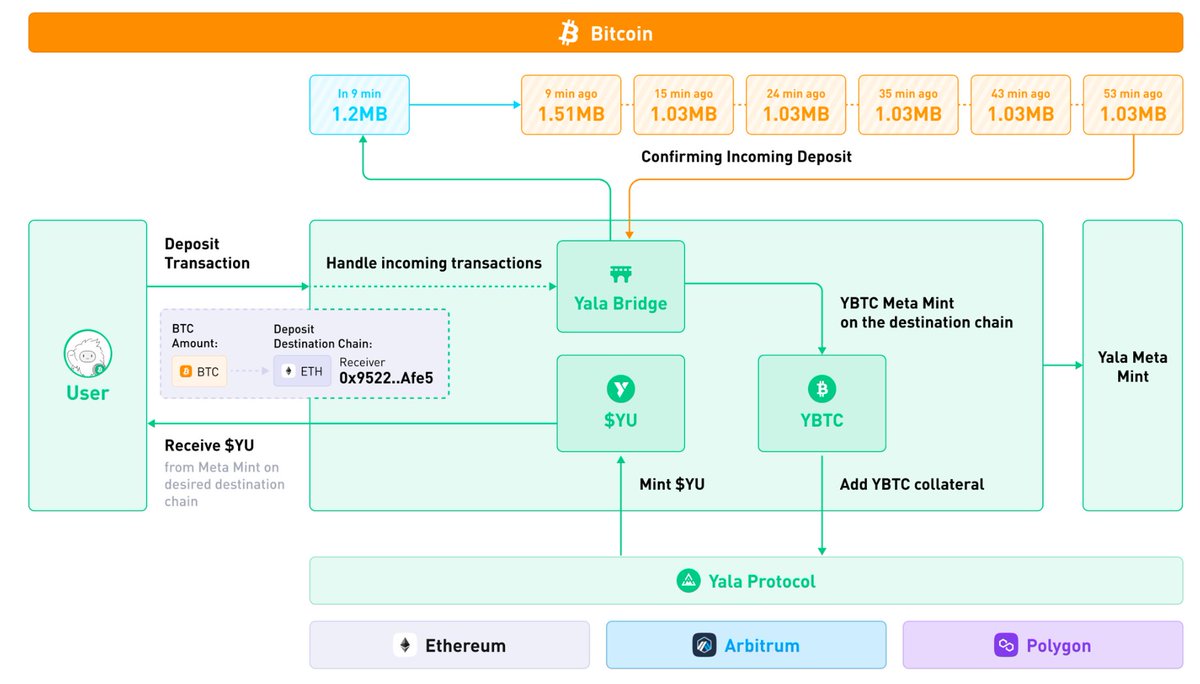Seeing the news that @yalaorg Yala's TGE will be selected next week, it is the time when BTC has just reached a new high, the second cake has climbed to the peak, liquidity is abundant, and the mood is FOMO.
Looking back at Babylon's TGE time at that time, it was accidentally chosen in mid-April, which was the only time BTC fell below 80K this year.
It is really time and fate.
Someone once asked what is the difference between the two being BTC Fi, and today I opened a post on the eve of TGE to talk about it.
First, the way the protocol is implemented.
Babylon will have its own independent L1 in the future, using Bitcoin collateral as additional security, somewhat similar to Bitcoin sidechains. Specifically, $BABY holders run PoS nodes and are responsible for producing blocks. The Bitcoin staker is responsible for verifying and making the final signature.
The advantage of this is that independent L1 has faster performance and greater freedom.
Yala, on the other hand, directly uses Ethereum as the settlement layer and does not issue its own chain, which is equivalent to a wrapped version of Bitcoin. In this way, chain security is guaranteed by Ethereum, and the bottlenecks of protocol security are mainly focused on cross-chain bridges and multi-signature.
The benefit is that adopting Ethereum will result in better compatibility and, obviously, faster product development.
The product goals of the other two are also different.
After Babylon has its own L1, it will focus on DeFi, RWA, and various applications like other public chains. The main thing is a big and complete.
After Yala crossed BTC to Ethereum, it focused on the stablecoin track. It allows $YBTC to overcollateralize to generate stablecoin $YU (somewhat similar to ETH overcollateralization in MakerDAO to generate DAI/USDS), so $YALA specializes in stablecoins.
Considering the recent smooth progress of the Genius Act, it is now timely to borrow the east wind.
Now more and more people are realizing that the killer applications of blockchain are actually Bitcoin, Ethereum and stablecoins, and the applications built around them hope to be the icing on the cake.
Show original

11.2K
23
The content on this page is provided by third parties. Unless otherwise stated, OKX is not the author of the cited article(s) and does not claim any copyright in the materials. The content is provided for informational purposes only and does not represent the views of OKX. It is not intended to be an endorsement of any kind and should not be considered investment advice or a solicitation to buy or sell digital assets. To the extent generative AI is utilized to provide summaries or other information, such AI generated content may be inaccurate or inconsistent. Please read the linked article for more details and information. OKX is not responsible for content hosted on third party sites. Digital asset holdings, including stablecoins and NFTs, involve a high degree of risk and can fluctuate greatly. You should carefully consider whether trading or holding digital assets is suitable for you in light of your financial condition.

